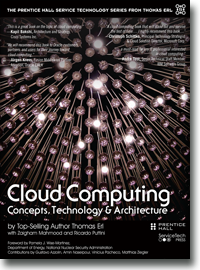Cloud Computing Patterns, Mechanisms > Basics > Virtualization Technology > Resource Replication
Resource Replication
Virtual servers are created as virtual disk images that contain binary ?le copies of hard disk content. These virtual disk images are accessible to the host’s operating system, meaning simple file operations, such as copy, move, and paste, can be used to replicate, migrate, and back up the virtual server. This ease of manipulation and replication is one of the most salient features of virtualization technology as it enables:
- The creation of standardized virtual machine images commonly con? gured to include virtual hardware capabilities, guest operating systems, and additional application software, for pre-packaging in virtual disk images in support of instantaneous deployment.
- Increased agility in the migration and deployment of a virtual machine’s new instances by being able to rapidly scale out and up.
- The ability to roll back, which is the instantaneous creation of VM snapshots by saving the state of the virtual server’s memory and hard disk image to a host-based file. (Operators can easily revert to these snapshots and restore the virtual machine to its prior state.)
- The support of business continuity with efficient backup and restoration procedures, as well as the creation of multiple instances of critical IT resources and applications.
